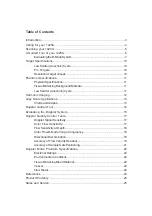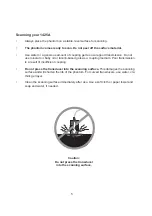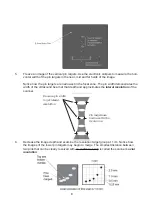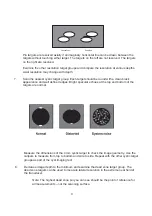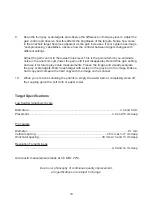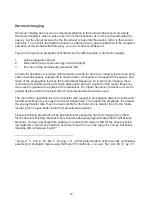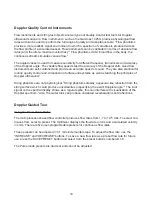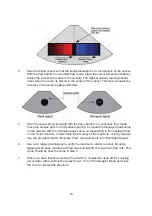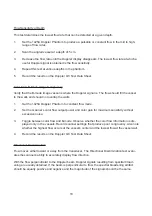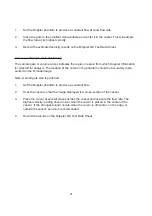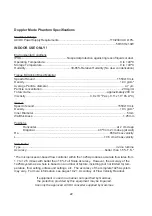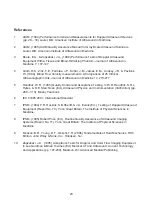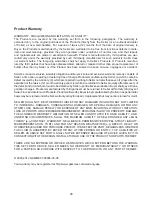
12
Harmonic Imaging
Harmonic imaging has become an important addition to the medical ultrasound community.
Harmonic imaging is when a pulse is sent from the transducer at a nominal (fundamental) fre-
quency, but the signal received by the transducer is twice that frequency, which is the second
harmonic. The result is that better resolution is attained at any given depth than if the reception
had been at the fundamental frequency, as in conventional ultrasound.
There are three tissue properties that determine the effectiveness of harmonic imaging:
1.
pulse propagation speed
2.
attenuation (rate of pulse energy loss with depth)
3.
the value of the nonlinearity parameter: B/A
In order for phantoms to present valid resolution results for harmonic imaging, these three prop-
erties must adequately correspond to human tissue. Attenuation increases with frequency and
much of the propagation involves the fundamental frequency, so in harmonic imaging, there
is enhanced resolution without as much attenuation as there would be if the higher frequency
were used to generate the pulses at the transducer. So, higher frequency resolution occurs for
greater depths within the subject than if conventional ultrasound was used.
The ratio of B/A quantifies the rate of transfer with respect to propagation distance of ultrasonic
fundamental frequency energy to harmonic frequencies. The greater the amplitude, the greater
the energy transfer rate; thus, the beam profile for the harmonic is smaller than for the funda-
mental, which means better lateral and elevational resolution.
Tissue-mimicking phantoms will be appropriate for assessing harmonic imaging only if B/A
for the tissue-mimicking material in the phantom adequately approximates that of soft tissues.
Recently, we have developed the capacity to measure the value of B/A for the tissue-mimick-
ing materials in Gammex phantoms and have found it to lie in the range for human soft tissue,
meaning B/A is between 6 and 7
1
.
_____________________________________
1
Gong, X. F., Zhu, Z. M., Shi, T., Huang, J. H. (1989) Determination of the acoustic nonlinearity
parameter in biological media using FAIS and ITD methods, J. Acoust. Soc. Am. 86 (1), pp 1-5.
Summary of Contents for Optimizer
Page 26: ...26 Notes...
Page 27: ...27 Notes...


